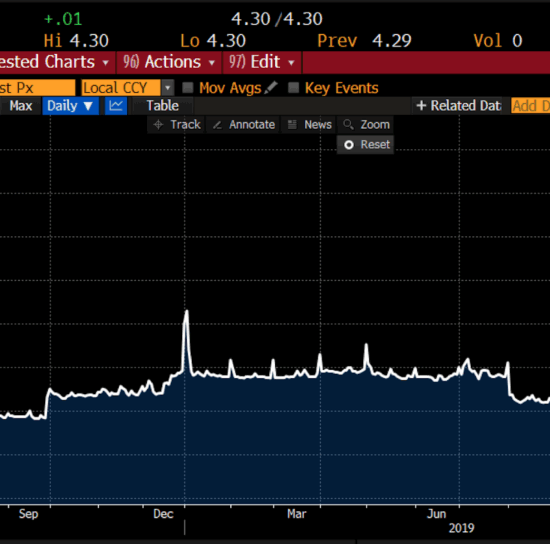Americans are afraid of their healthcare system — and that fear is justified. Families worry that an accident or illness will bankrupt them, and patients on public programs often wait months to see a doctor, sometimes dying in line before treatment begins. Nationally, healthcare spending is devouring nearly a fifth of the economy and driving America’s unsustainable debt trajectory.
The average family with employer-sponsored insurance now pays nearly $25,000 a year in premiums. Those dollars are siphoned out of paychecks before workers ever see them, enriching bureaucracies instead of delivering care. Meanwhile, US healthcare spending hit $4.9 trillion in 2023, almost 18 percent of GDP.
Where does all this money go? Too much is consumed by what we call BURRDEN: Bureaucratic, Unaccountable, Rigid, Regulated, Distorted, Expensive, and Needless costs.
My co-authored research with Dr. Deane Waldman shows that these hidden costs could account for as much as 50 percent of total healthcare spending — up to $2.5 trillion every year wasted on forms, delays, compliance, and red tape, instead of healing.
Death by Queue
The most tragic result of BURRDEN is not financial waste but human loss. Medicaid now covers more than 80 million Americans, yet “coverage” does not equal access. Because government reimbursement rates are so low, fewer US physicians accept new Medicaid patients. Those who do are often overwhelmed, leading to months-long waits for appointments.
This is what we call death by queue. A Medicaid card promises care, but in practice, it too often means waiting in line while conditions worsen. Medicaid patients are more likely to experience poor outcomes, not because doctors treat them differently once in the operating room, but because they can’t get timely access to care in the first place. In economics, this is a shortage: demand outstrips supply because the government suppresses prices.
More funding won’t fix this. As long as bureaucrats cap reimbursement rates, providers will be forced to limit access to stay in business, and patients will continue to die waiting.
A Workforce Out of Balance
The structure of the healthcare workforce highlights the imbalance. According to the Bureau of Labor Statistics, medical and health services managers — administrators — are projected to grow 23 percent over the next decade, while physicians will grow just three percent. America is producing far more paper-pushers than doctors.
This explosion of administration mirrors the money trail. A landmark study found administrative costs account for 34 percent of US health spending. Add regulatory compliance, licensing barriers, and insurance bureaucracy, and BURRDEN consumes nearly half of every healthcare dollar.
Why More Government Fails
Washington’s instinct is to impose more rules and more price controls. The Inflation Reduction Act and the May 2025 Most Favored Nation Executive Order tied US drug prices to European systems that ration care and free-ride on American innovation.
But price caps don’t lower costs — they reduce supply. A National Bureau of Economic Research study found that a 40–50 percent drop in expected drug prices would cut new drug development by up to 60 percent. That means fewer cures and longer wait times.
The biotech sector illustrates the stakes. For decades, the US has led the world in new therapies because our system rewarded innovation. Now, with the government importing failed foreign policies, China is catching up fast, investing heavily under its “Made in China 2025” plan.
If Washington continues to undermine innovation at home, patients will face not just queues, but the loss of tomorrow’s cures.
The Empower Patients Initiative
The alternative is clear: trust patients, not bureaucrats. The Empower Patients Initiative offers reforms that cut BURRDEN, reduce costs, and restore access to care.
No-Limit Health Savings Accounts (HSAs)
Families should be able to save and spend their own healthcare dollars tax-free, without arbitrary caps. HSAs restore price sensitivity and unleash competition. Instead of $24,000 in hidden premiums, families could control those dollars directly.
Medicaid Block Grants to States
Medicaid should be block-granted to states, giving them flexibility to innovate. States could expand direct primary care networks, integrate community clinics, and tailor coverage to local needs. Federalism fosters competition and accountability.
Direct Patient-Doctor Relationships
Third-party reimbursement schedules force doctors to serve bureaucrats instead of patients. Direct pay and subscription models restore trust and reduce paperwork. Direct Primary Care practices have already demonstrated that fewer intermediaries mean more time for patients and lower costs.
Transparency and Real Prices
Markets can’t work without prices. Providers should post costs upfront, as the Surgery Center of Oklahoma does. Transparency pressures providers to compete on value, not billing codes.
Shrink Bureaucracy Naturally
Middlemen, such as pharmacy benefit managers, grew in popularity because the government disconnected patients from the costs of their healthcare. In a true market, PBMs would shrink or evolve naturally, no longer artificially necessary. The goal isn’t to regulate them more — it’s to restore market conditions that render them optional.
Cutting BURRDEN in Half
The economic potential of these reforms is staggering. If we reduce BURRDEN by even half, up to $1.2 trillion a year could be redirected from bureaucracy to patients and providers. That’s enough to lower family costs dramatically, raise take-home pay, and improve access without expanding federal debt.
Think of what it would mean if patients could get timely appointments, if doctors spent more time healing than coding, and if innovation flowed freely rather than being strangled by red tape. That’s not utopian — it’s simply what happens when markets are allowed to function.
A Human and Moral Case
The human cost of the current system is undeniable. Medicaid patients die waiting for care. Families sacrifice $24,000 a year for coverage they can’t control. Doctors burn out while administrators multiply.
The moral case for reform is clear: stop rationing by bureaucracy, stop wasting trillions on BURRDEN, and give patients the dignity of choice. Healthcare is not a favor dispensed by government; it is a service best delivered through voluntary exchange.
Conclusion: Break the Chains
Healthcare is broken not because markets failed, but because markets were never allowed to function. BURRDEN is the inevitable result of central planning. The Empower Patients Initiative offers the way forward: HSAs without limits, Medicaid block grants, direct doctor-patient relationships, and transparent pricing.
If we free even half of the dollars now wasted on BURRDEN, America’s healthcare system would become more affordable, more innovative, and more humane. Patients would no longer die in queues, families would keep more of their wages, and doctors would be free to heal.
The question is simple: will we continue feeding the bureaucracy — or will we empower patients?
The answer should be obvious. Empower patients, not bureaucrats. That’s how we cut costs, cure queues, and let people prosper.





